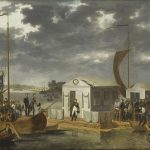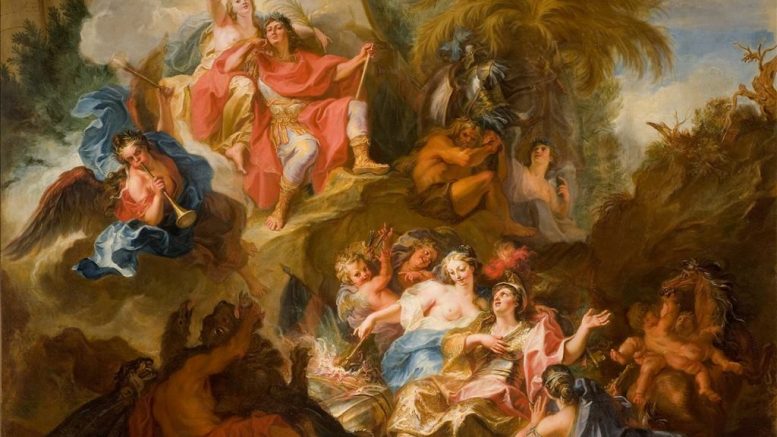Diplomatic archives of historical and international significance – usually kept in secure concrete vaults – will be on display for the first time at Paris’ Petit Palais museum.
They include a ratified version of the Treaty of Versailles – the original document was taken by the Germans during World War II (WWII) only to later disappear in the destruction of Berlin.
Almost 100 historical treaties and diplomatic documents are on display as well as paintings, engravings, sculptures and other precious objects, from the Middle Ages to the present day, in an exhibition co-organised with France’s Ministry of Foreign Affairs and International Development.
The Art of Peace: secrets and treasures of diplomacy, was put together by a team of curators lead by Christophe Leribault, director of the Petit Palais, and Richard Boidin, ex-director of the Diplomatic Archives of the Ministry of Foreign Affairs and International Development.
Mr Leribault told Chief-Exec.com yesterday that the main aim was to shed light on “the art of peace” on a diplomatic level. “The art of diplomacy”, which involves skilful negotiations behind closed doors, that can eventually lead to peace treaties and agreements – including commercial ones – which can prevent other conflicts from emerging.
The works of art and objects on display also deal with the art of peace, but on an aesthetic and symbolic or allegorical level, and help set the various documents in their historical context.
The historical journey starts with a chilling introduction, with stark reminders of both World War I (WWI) and World War II, with a painting of a dead soldier in a battlefield in cold green and blue hues by Georges Leroux and an eerily black and white silent film showing aerial views of atomic explosions in Hiroshima. These are shown opposite much earlier conflicts depicted in a strangely beautiful and peaceful late medieval tapestry in warm reddish tones.
One of the earliest documents on display dates back to the early Middle Ages: it is The Oaths of Strasbourg from 842 taken by the three grandsons of Charlemagne, who united a large part of Europe after the fall of the Roman Empire.
Mr Leribault said that “it is an important document as it’s a prelude to the Treaty of Verdun [in 843]”, which subsequently lead to the scission of the Carolingian Empire into three kingdoms in western and central Europe.
Another notable document on view is the Treaty of Tilsit, signed by Napoleon I of France and Alexander I of Russia in 1807. The meeting takes place on a raft moored in the Neman River and is depicted in a painting by Adolphe Roehn.
“We show the Treaty of Tilsit as well as a draft crossed out in places by the hands of Napoleon and Talleyrand [a French diplomat],” Mr Leribault said.

Treaty of Tilsit: Napoleon I and Alexander I on the Neman River in 1807. © RMN-Grand Palais
Also featured in the exhibition are documents pertaining to the Entente Cordiale (“Cordial Agreement”) finalised in 1904 and ending longstanding antagonisms between France and Britain.
“This agreement between France and England finally worked out, with lasting effects, seeing us throughout the 20th century as allies in two world wars. After centuries of defiance. That is until Brexit,” Mr Leribault said.
These Franco-British agreements also addressed increasing concerns of colonial expansion such as the secret Sykes-Picot agreements, also on view. They defined spheres of control and influence between Great Britain and France, carving out part of the Ottoman Empire’s Arab provinces in 1916.
“What is really important is the map we show here with these lines in different colours [blue for the French and red for the British] hand-drawn in ink, representing the borders [of what will become later known as the Middle East]”, Mr Leribault said.
The exhibition ends with a section titled International Order and Disorder, which focuses on more contemporary issues.
“In the last room we have two glass cabinets entirely devoted to Europe”, he said.
On display a telegram sent to the Foreign Affairs Ministry by its French Ambassador to Vienna announces the 1914 assassination of the Archduke Franz Ferdinand and his wife in Sarajevo, considered to be the event that triggered WWI.
“It’s very moving, although it is a simple document originally sent as a coded message to the Ministry”, Mr Leribault said.
The Treaty of Versailles in 1919, marking the end of WWI, is shown opposite the 18th century writing table on which it was allegedly signed, which then led to The League of Nations, followed by the United Nations Organisation in 1945.
Important diplomatic archives concerned with the subsequent construction of Europe are also featured, with the Maastricht treaty from 1992, officially known as the Treaty of the European Union.
“Coming back to Brexit, these agreements and treaties are crucial in terms of stability [for Europe and the world]… not only economically but also politically”, Mr Leribault said.
Exhibitions like these are important because they remind us of what led to our current state of peace and stability in Europe, something we too often take for granted.
By Katia Yezli
The Art of Peace: secrets and treasures of diplomacy can be seen at the Petit Palais museum, Avenue Winston Churchill, 75008 Paris. The exhibition runs until 15th January 2017




